Gigabyte R282-N80 Block Diagram
Here is the block diagram we mentioned in the hardware overview section:
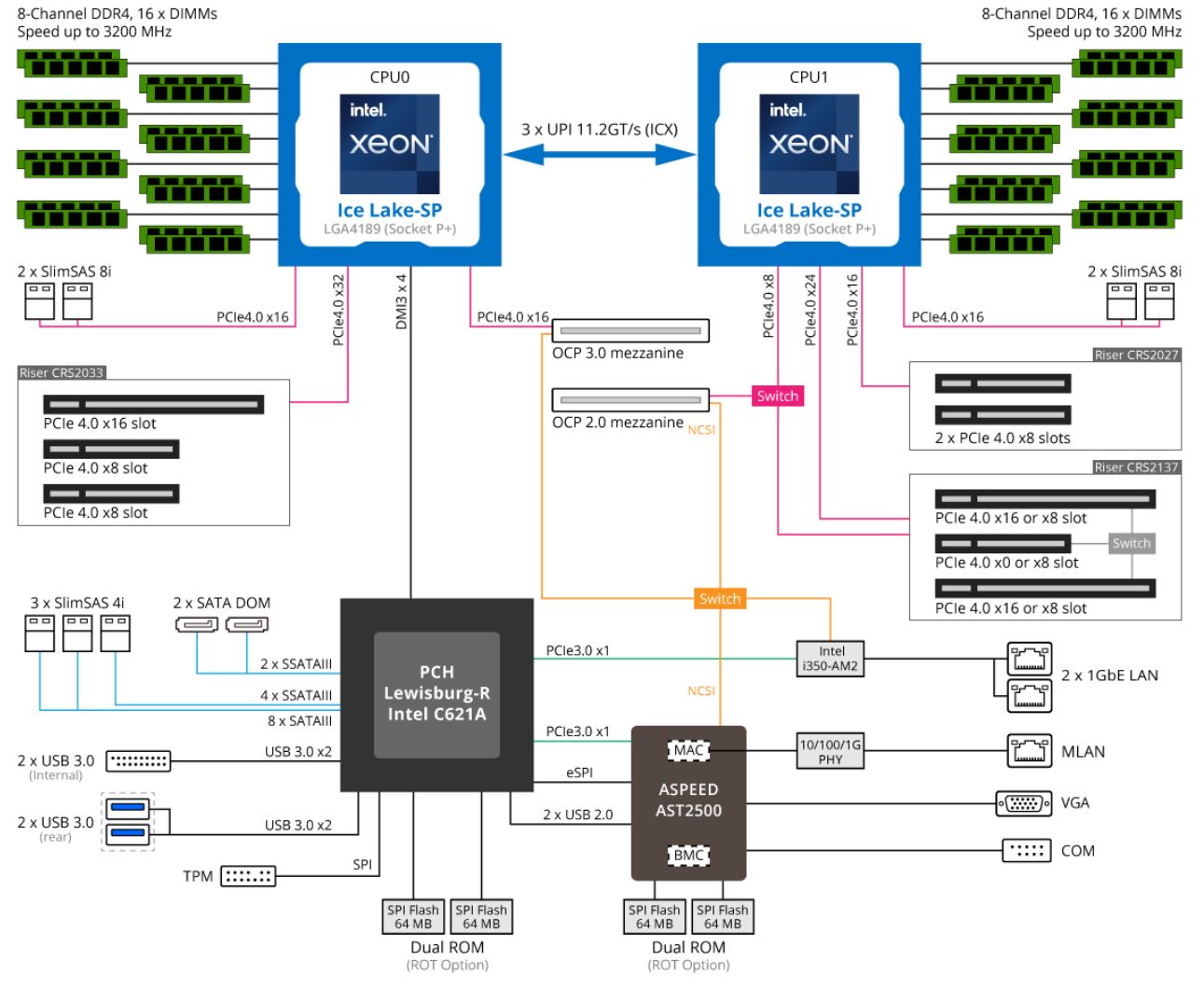
Perhaps the two biggest features of this that are worth noting are the SATA III lanes and the middle riser situation. The SATA lanes are, as we saw, not connected since the R282-N80 is designed for SAS3 operation and a SAS3 HBA or RAID controller.
The other big feature is that since Gigabyte is using so many PCIe lanes throughout the system, even with the new Ice Lake generation 128x PCIe Gen4 lanes, and the extra PCH PCIe lanes, the middle riser has a maximum of 32 lanes going in but has 40x lanes of riser slots. What is more, eight of these lanes are switched with the OCP NIC 2.0 slot. You can see this on the diagram coming off of CPU1 to the riser shown in the right middle of the diagram. Gigabyte is pushing the expansion capabilities of the platform with every PCIe lane being used with some oversubscription, so this is a result. Still, it makes for a more flexible design, one just needs to be aware of this.
Gigabyte R282-N80 Management
Gigabyte still uses the ASPEED BMC in this generation. We have also covered the management solution a number of times. As one can see, the Gigabyte R282-N80 utilizes a newer MegaRAC SP-X interface for Gigabyte that is common on a number of its newer platforms. This interface is a more modern HTML5 UI that performs more like today’s web pages and less like pages from a decade ago. We like this change. Here is the dashboard.
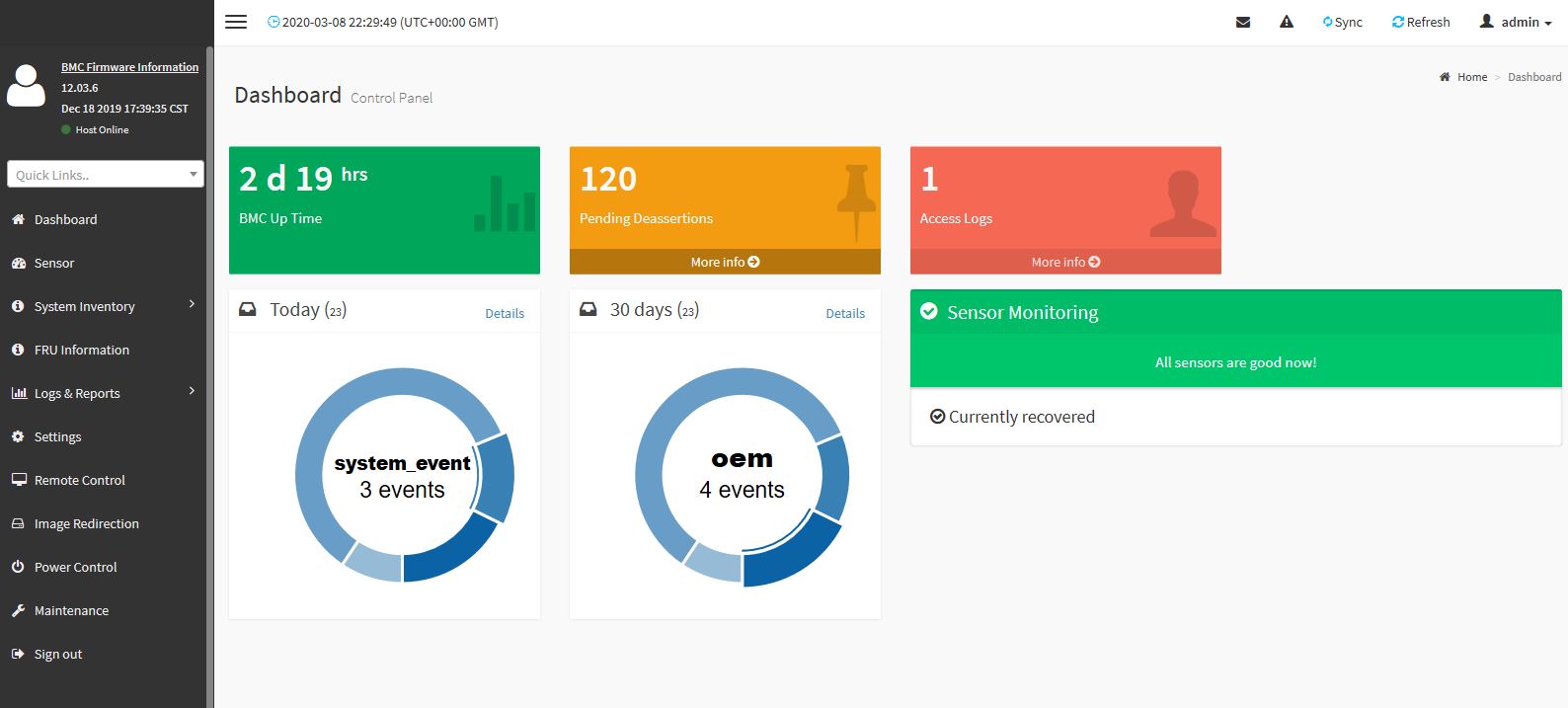
You will find standard BMC IPMI management features here, such as the ability to monitor sensors. One can also perform functions such as updating BIOS and IPMI firmware directly from the web interface. Companies like Supermicro charge extra for this functionality, but it is included with Gigabyte’s solution.
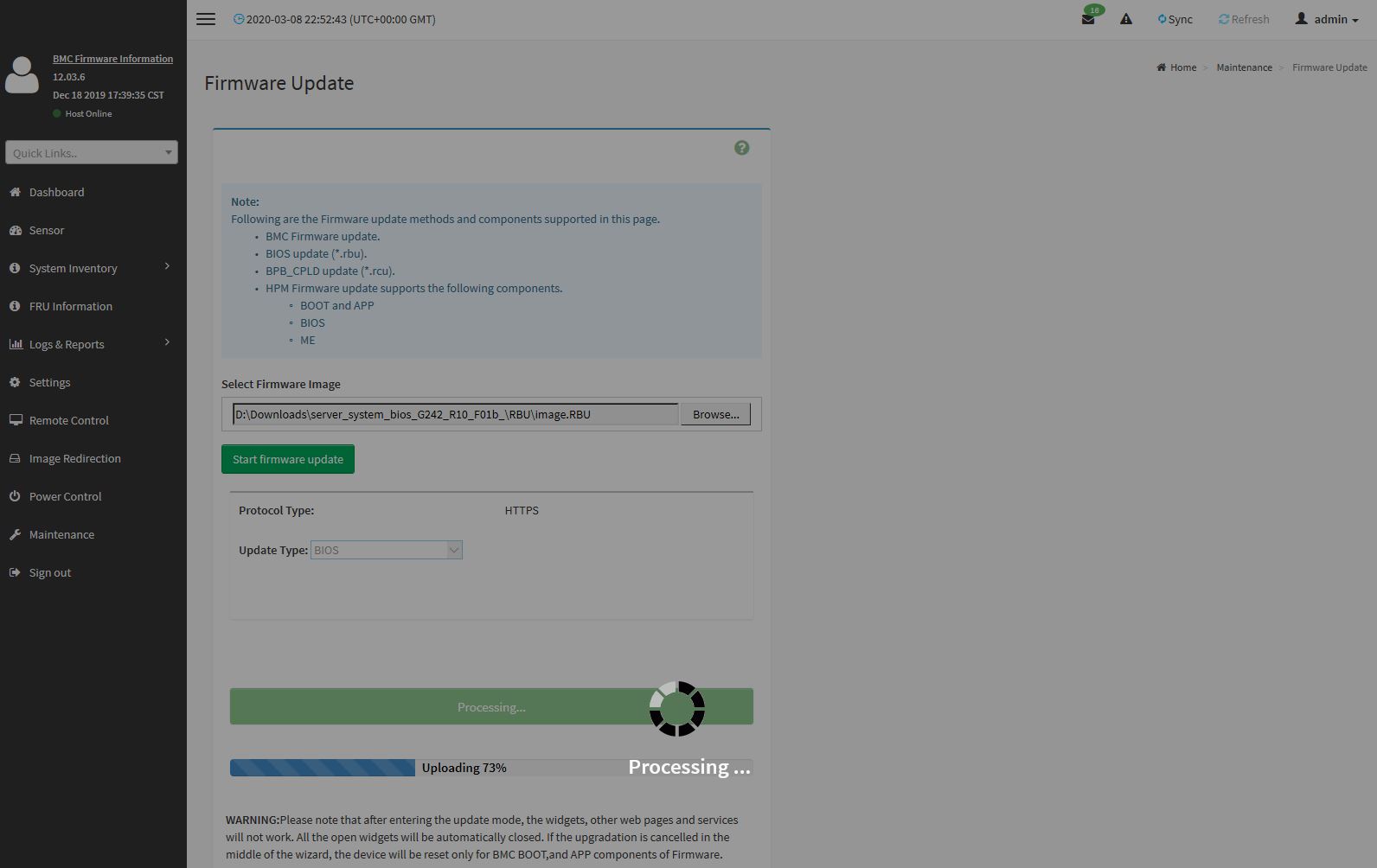
One of the other features is the new HTML5 iKVM for remote management. We think this is a great solution. Some other vendors have implemented iKVM HTML5 clients but did not implement virtual media support in them at the outset. Gigabyte has this functionality and power control support all from a single browser console.
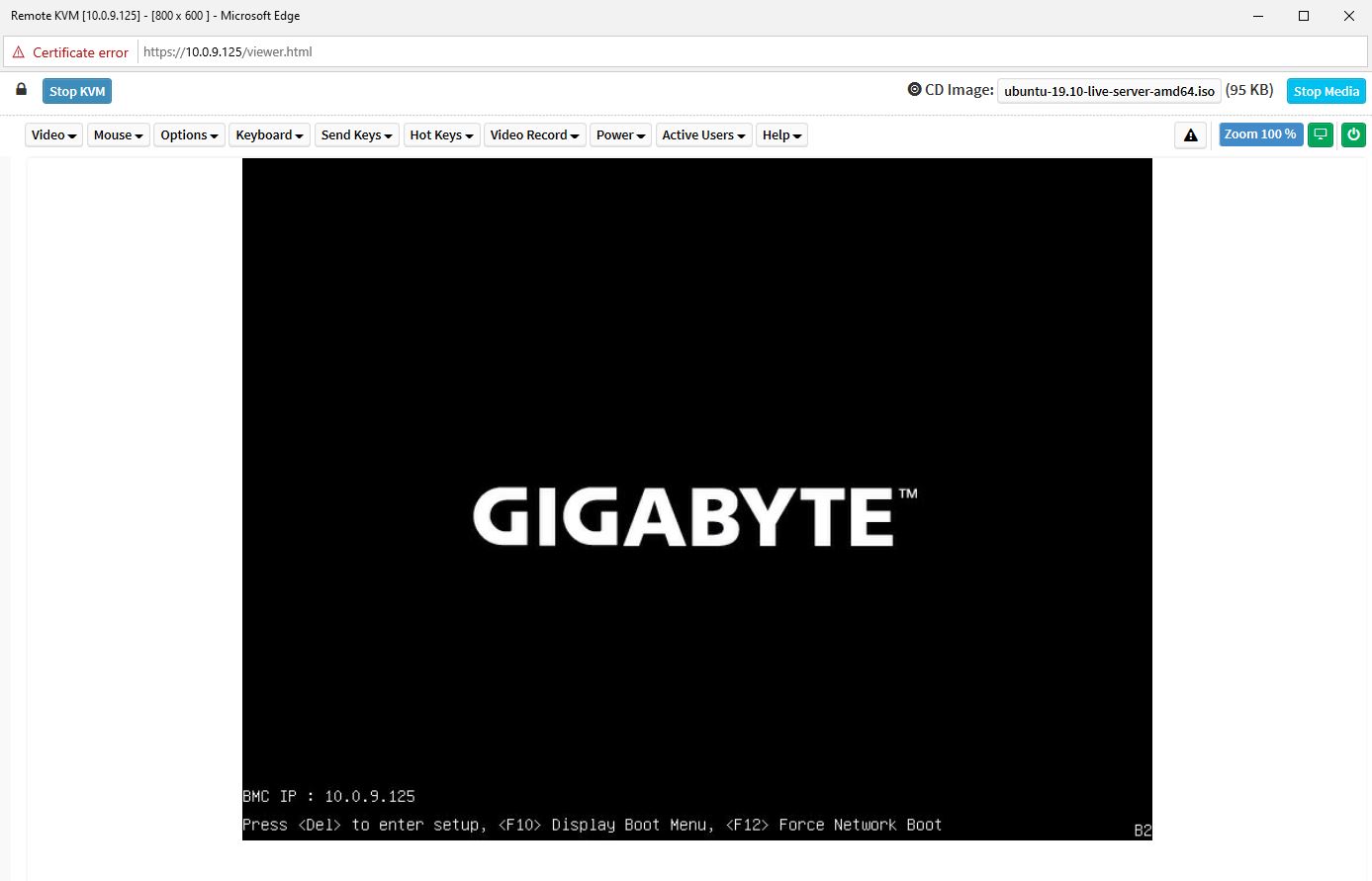
We want to emphasize that this is a key differentiation point for Gigabyte. Many large system vendors such as Dell EMC, HPE, and Lenovo charge for iKVM functionality. This feature is an essential tool for remote system administration these days. Gigabyte’s inclusion of the functionality as a standard feature is great for customers who have one less license to worry about.
The web GUI is perhaps the easiest to show online, however, the system also has a Redfish API for automation. This is along what other server vendors are doing as Redfish has become the industry-standard API for server management.
As a quick note, this system from Gigabyte shipped with a BMC unique password feature enabled. In the future, these systems will have a unique password due to a California law mandating the practice. You can read more about that in Why Your Favorite Default Passwords Are Changing or see the video:
If you are looking for a unique password, it is usually the 11-digit serial number for the motherboard on Gigabyte systems.
Next, let us get to the performance.
Gigabyte R282-N80 Performance
In terms of performance, we utilized a dual Intel Xeon Platinum 8380 configuration to see how this system would fare with the highest-TDP CPUs we could get in this generation. These days, thermals are perhaps the biggest constraint on performance. As a result, we wanted to see if the four fan setup could adequately cool the high-TDP parts so we compared them to our review baseline platform results across a number of benchmarks.
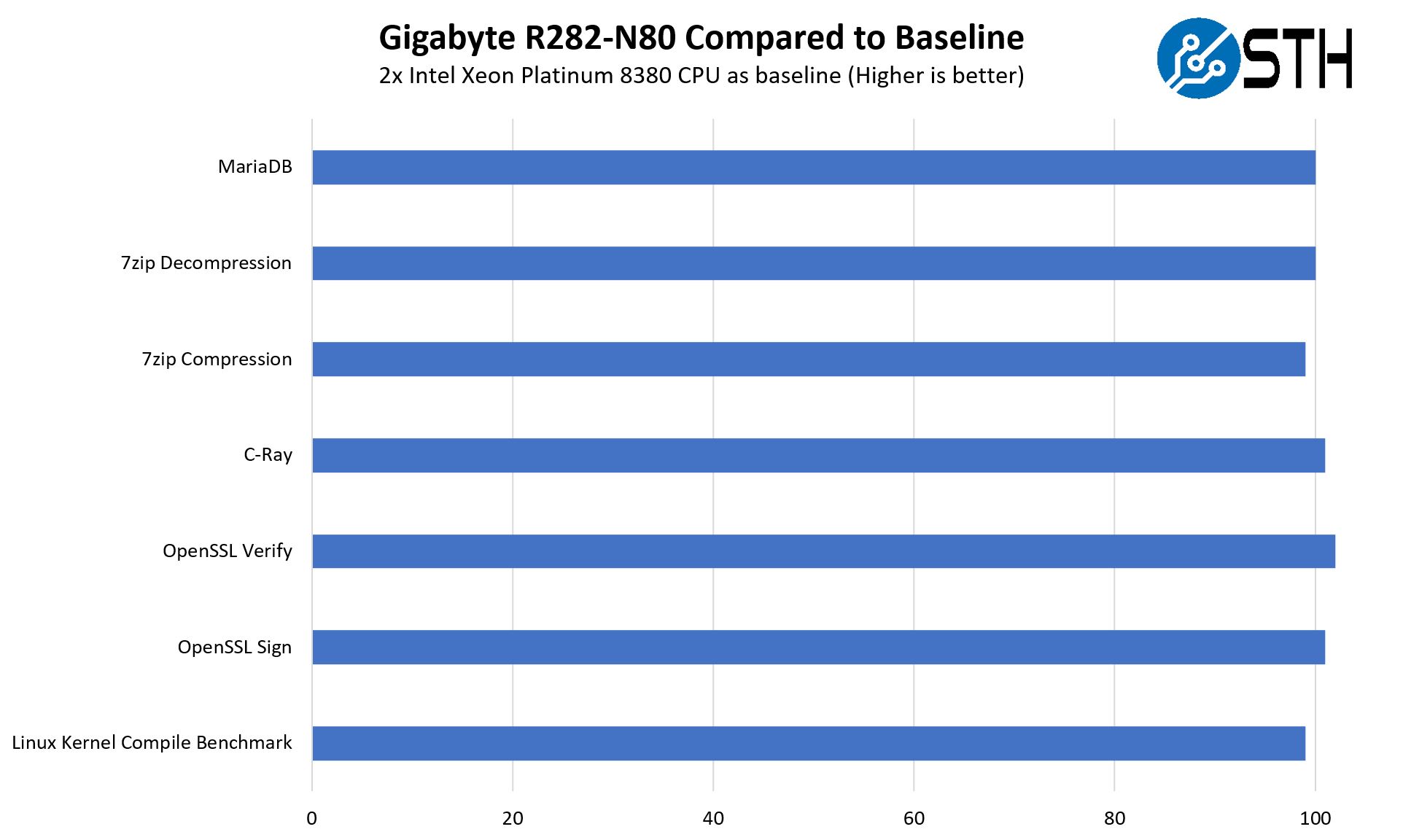
Performance again is very good here. We did get the OpenSSL Verify result that was a bit of an outlier on the positive side, but overall we were within +/- 1% of our reference platform so this was a very solid result.
Let us continue with the power consumption, STH Server Spider, and our final words.




It’s interesting to see that passive risers are still possible with Gen 4. Not much of that to see in the consumer space.
I’m guessing they’ve only managed it because they’re using an exotic, low loss, perfect impedance (surface mount by the looks of it?) connector between the riser and the motherboard.